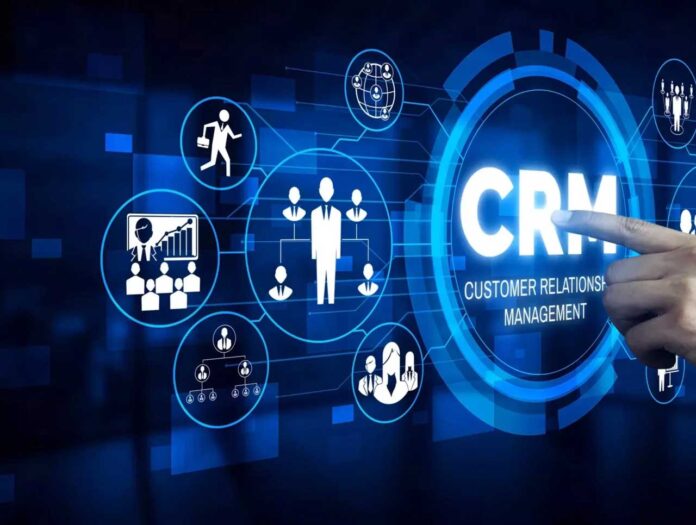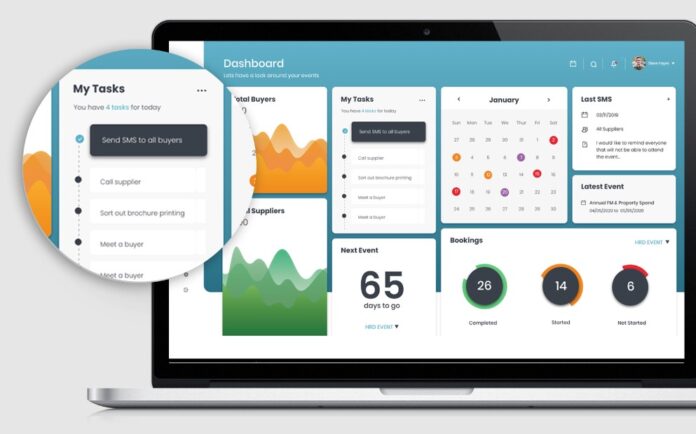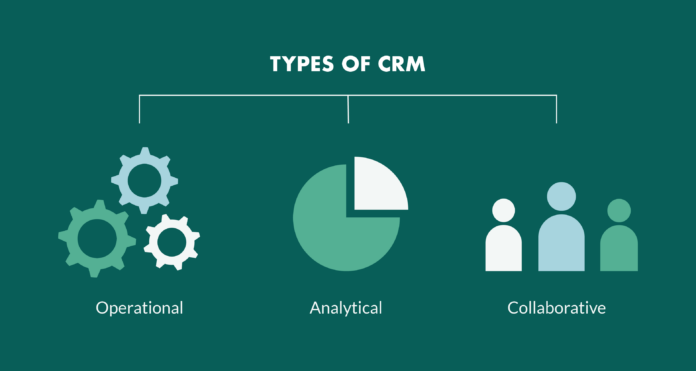
To ensure business success in the evolving realm of Customer Relationship Management understanding the 3 types is helpful to your business.
Having an effective CRM system plays an important role in managing customer interactions while streamlining sales processes. This will help empower businesses to build robust customer relationships and gather the necessary insights.
Focusing on operational, analytical, and collaborative relationship manager systems – each with unique features designed to expand connecting with clients or usher changes in sales processes.
As a business evaluating organizational factors and studying different CRMs will pave the way towards investing in the ideal software system that offers maximum potential for your business growth.
What is CRM Software

Maximizing returns on your company’s marketing efforts requires a deep understanding of your customers’ needs & interests. This is where CRM systems come into play as a valuable addition in the business toolkit.
CRM software will help you with sales process automation & user behavior tracking. This will help with client communication, making it more efficient but also lets you maintain an elevated rate of satisfaction amongst them as well.
Employee and sales teams’ accessibility to relevant client data has been made more convenient thanks to these systems. The software can aggregate crucial details such as names & addresses or demographic statistics from multiple channels into one centralized point.
There are three primary types of CRM platforms available, each designed to handle specific aspects of customer relationship management:
- Operational ─ Designed to streamline daily processes related to customer interactions such as lead generation, sales, and support services. Operational customer relationship manager offers a significant boost in productivity. With its integration into core business operations comes the potential for increased conversion rates from leads to contacts while maintaining solid relationships with loyal clients.
- Analytical ─ This represents a specific facet of Customer Relationship Management where it works to dive deep into data. The purpose is to identify overarching themes, trends or new openings which could yield higher levels of fulfillment on the part of customers. By making use of dependable analytic CRM software systems, one gains the ability for segregating groups of customers as well as assessing potential future actions in advance and therefore create individualized marketing plans aimed at pinpointing peoples’ interests.
- Collaborative ─ Embracing the collaborative model of this software seeks to promote seamless communication between your internal teams and external associates. By pooling data from various departments this method aims to deliver an all-encompassing experience that enhances client satisfaction while keeping them loyal for longer periods.
You can check out on BeaconInside how to get started using GoHighLevel CRM software.
Three Types of CRM

Operational
Operational CRM can significantly improve how your company handles its various interactions with clients. Incorporating several crucial customer relationships processes into one central system helps optimize lead-generation efforts.
This also helps to ensure that every client interaction is streamlined toward conversion or retention activities such as personalized follow-up campaigns or helpful support modules.
Operational customer relationship management software will typically focus on sales techniques like call tracking or personalized emailing. This makes it easier than ever before for businesses in different industries to stay in consistent communication with all types of clients.
Analytical
For those looking for a way to improve their business practices. Implementing Analytical CRM may be just what they need.
Examining data through this innovative system helps identify patterns that indicate needs or wants within your target audience. This will provide an opportunity for better decision-making in terms of business strategy.
By analyzing data from various sources like sales records, marketing campaigns or customer experience feedback you gain deeper insight into your clients’ behavior patterns.
This allows you to see the underperforming areas within your current strategy so that you may optimize accordingly.
We use this all the time with the software we use, and it works great for our business.
Collaborative
To enhance coordination amongst diverse departments in an organization such as sales, marketing or customer service teams. Collaborative CRM is being employed with the primary objective of efficient sharing of information.
This sharing leads to delivering a uniform experience across multiple communication channels for your customers.
Collaborative empowers organizations to collaboratively utilize valuable knowledge and insights along with valuable customer data. Doing this will result in a holistic understanding which paves the path toward delivering better overall services.
Operational CRM Features

For companies aiming to optimize their customer relations efforts, adopting an operational CRM methodology could be a valuable tactic.
This method serves as an all-encompassing solution for coordinating various processes whilst staying synchronized with the core business process framework.
Sales Automation
To ease the burden of managing customer interactions while improving lead generation, sales automation provides an array of tools such as:
- Sales force automation ─ This automates lead management to forecasting & reports within a structured framework.
- Lead management ─ That captures leads centrally & tracks progress using real-time information.
- Partner relationship management ─ Is harmonizing internal support for partnership management.
- Sales pipeline ─ Where visualization maps out bottlenecks allowing prioritization of opportunities.
- Sales forecasting ─ Historical data analytics underpin smarter resourcing patterns to set goals.
Marketing Automation
Marketing automation is instrumental in enhancing the success of designing, planning, and executing cohesive marketing campaigns. Key building blocks for successfully implementing a marketing automation infrastructure include:
- Marketing campaigns ─ Create and execute various advertising initiatives via online adverts, social media promotions, and similar tactics, whilst monitoring progress throughout campaigns
- Email campaigns ─ Develop tailored emails to engage prospective customers regularly with compelling information that results in retention and new customer acquisition.
- Campaign management ─ Implementing this function will mean all promotional outputs are overseen centrally within one system creating consistency across multiple channels making insights simple so you can improve your targeting efficiency.
- Lead generation ─ Use targeted strategies aimed at capturing specific target markets to generate better outcomes from your promotional endeavors.
Service Automation
Service automation offers a targeted solution for optimizing your customer support operation needs. This component focuses on improving the quality and efficiency of customer services, which results in greater levels of satisfaction among customers.
The following features are essential aspects for implementing service automation effectively:
- Customer support ─ Provide adequate training and resources to facilitate allocation of staff in addressing client inquiries.
- Ticketing systems ─ Employ centralized platforms that manage and track requests across different segments reducing operational redundancy.
- Service management ─ Regularly monitoring data patterns to reveal critical information ensuring high levels of client satisfaction.
Analytical CRM Features

Data Mining and Analysis
Understanding customers better constitutes a key outcome of Analytical CRM.
Achieving this requires tapping into profitable resources like data mining techniques which allow the extraction of valuable insights from the available customer database.
Utilizing this information, you can find unusual patterns or trends that might be presented with new opportunities worthy of being exploited.
Another vital element involved here is consolidating customer interactions across various channels. This is crucial for gaining deeper awareness of their preferences and experiences.
Once obtained, data analysis helps unearth meaningful hidden patterns or correlations leading to improvement in terms of customer loyalty.
Customer Segmentation
This type of software empowers businesses to categorize customers into distinct segments based on behavioral patterns such as preferences or past purchases. Using this will lead to deeper insight into specific purchasing behaviors.
The art of customer segmentation is vital in crafting tailor-made communications for everyone in these groups by understanding what resonates within a particular designated segment audience.
Implementing this approach boosts marketing effort optimization and encourages upselling or cross-selling options. Doing this will drive a higher return on investment through repeat customers.
Sales and Marketing Analytics
To run a flourishing business takes a strong attention-to-detail on all aspects of sales & marketing analysis. By keeping track of valuable metrics such as customer retention rates, up-sell/cross-sell successes, along with overall brand loyalty figures – one can gain greater insight.
With implementation of an analytical CRM system in place businesses can increase customer satisfaction/retention – thus elevating bottom-line revenue.
Collaborative CRM Benefits

Channel Management
Collaborative CRM technology has made managing customer service channels more streamlined than ever before.
The software enables companies to optimize their interactions with customers through multiple touchpoints such as social media platforms (Twitter/Facebook), live chats or email inquiries which cater for their individual preferences.
Such an approach targeting customers’ unique circumstances throughout their lifecycle journey enables businesses to build stronger ties between them.
Knowledge Sharing
By incorporating a collaborative type system, your organization can experience enhanced knowledge sharing.
This approach empowers you to establish a centralized and conveniently accessible customer knowledge base. This knowledge base will permit various departments to acquire easy access to customer history and preferences.
When sharing valuable insights concerning customer behavior, your teams can work more efficiently in promoting consistent and cohesive customer interaction.
Enhancing Customer Experience (CX)
Collaborative CRM is an immensely powerful tool for catering to individualized consumer needs and specifications. This will ultimately lead to increased overall levels of satisfaction within target audiences.
Companies use this to deliver intricately tailored engagement experiences throughout all stages of interaction with customers. This focused approach has been shown to improve consumer contentment – significantly increasing overall brand loyalty amongst clients over time.
The companies who utilize it will have a long-term competitive advantage within their respective industries’.
Workflow Optimization
Collaborative customer relationship manager presents a valuable solution for improving your organization’s business processes and workflow efficiency. Monitor customer interactions with ease using the system’s analytical features, which reveal areas where optimization is possible.
Streamlining these processes will reduce duplications across departments while enhancing overall collaboration amongst teams – ultimately leading to an improved experience for customers.










